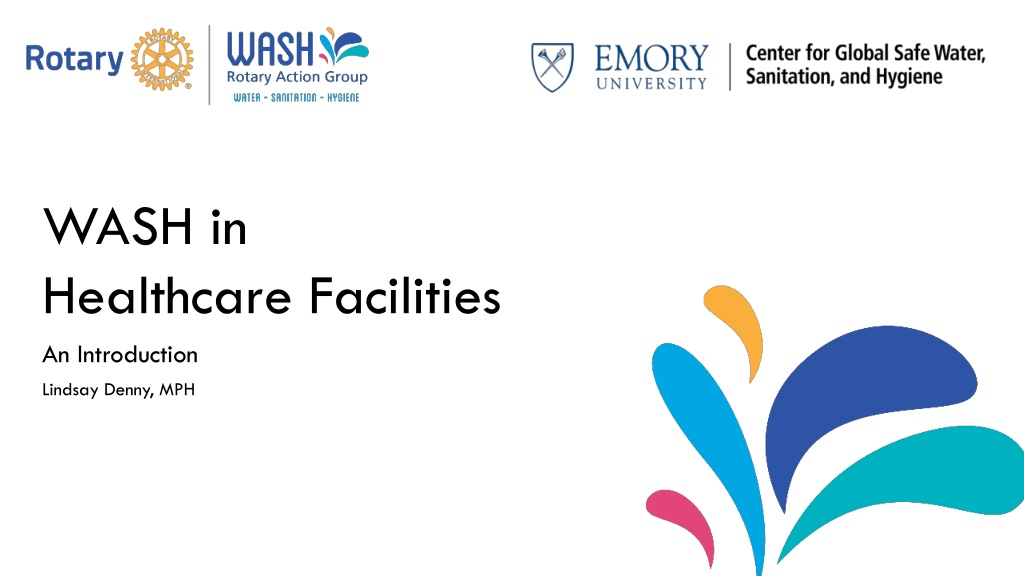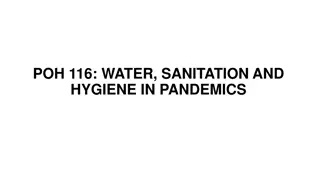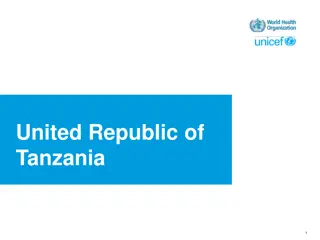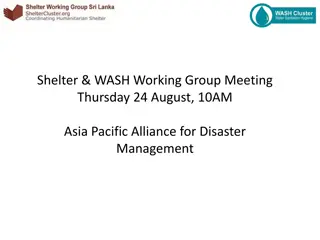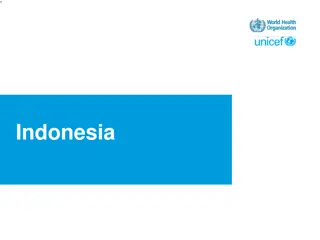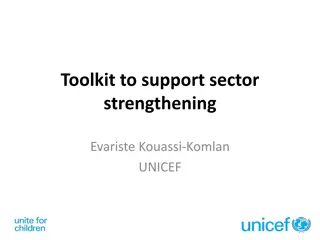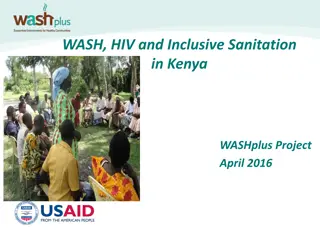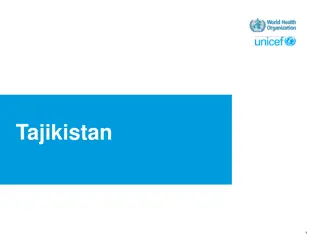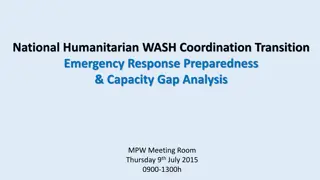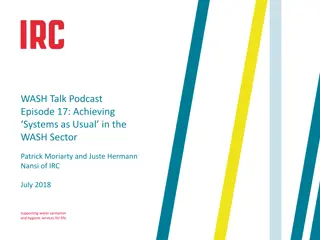Importance of WASH in Healthcare Facilities: An Overview
WASH in healthcare facilities is crucial for providing a safe and hygienic environment. It includes water, sanitation, hand hygiene, healthcare waste management, and environmental cleaning. Basic WASH activities in facilities are essential for patient care and preventing infections. The historical significance of WASH practices in healthcare highlights the long-standing importance of cleanliness in reducing morbidity and mortality among patients.
Download Presentation

Please find below an Image/Link to download the presentation.
The content on the website is provided AS IS for your information and personal use only. It may not be sold, licensed, or shared on other websites without obtaining consent from the author. Download presentation by click this link. If you encounter any issues during the download, it is possible that the publisher has removed the file from their server.
E N D
Presentation Transcript
WASH in Healthcare Facilities An Introduction Lindsay Denny, MPH
A healthcare facility without WASH is not a healthcare facility. Dr. Maria Neira World Health Organization
What is WASH in Healthcare Facilities? The provision of WASH infrastructure, resources, services, and practices in a healthcare setting: 1. Water 2. Sanitation 3. Hand Hygiene 4. Healthcare Waste Management 5. Environmental Cleaning
WATER WATER
Which HCF Activities Require Basic WASH? Hand hygiene Medical & surgical procedures (e.g., cleaning wounds, irrigating tissue) Patient hygiene & bathing (newborns, mothers, other inpatients) Drinking water (including oral medications) Cleaning, disinfecting and sterilizing medical equipment Use of certain medical devices (CPAP machine, nebulizer) Sanitation (including latrines, fecal waste management) Environmental hygiene (cleaning floors and surfaces, laundry) Healthcare waste disposal Laboratory activities Production of hygiene materials (hand sanitizer, chlorine)
PRINCIPLES OF WASH and HEALTH ARE NOT NEW The Principles of WASH & Health Are NOT New Physicians have been calling for improved hygiene as part of the strategy to reduce morbidity and mortality among patients for several centuries: 1795 - Alexander Gordon asserted that deaths from puerperal fever could be prevented with greater cleanliness and that nurses and physicians ought carefully to wash themselves after contact with an infected patient (Velleman, 2014). 1800 s - Ignaz Semmelweis reduced maternal deaths in HCF by requiring doctors to wash their hands in chlorine solution before examining women in labor (Velleman, 2014).
Push for Healthcare Facility Births The push for women to give birth in HCF has been essential to international strategies to improve the health of mothers and babies in the developing world. Ensuring all births are assisted by a skilled birth attendant is a critical strategy for reducing maternal and newborn morbidity and mortality. Inadequate or non-existent care during pregnancy and delivery was responsible for the death of 295,000 mothers in 2017 and 2.5 million newborns in the first month of life in 2018. Source: UNICEF/WHO, 2019 and WHO (2019)
WASH provision is inadequate in many healthcare facilities in LMICs, including labor wards.
Maternal and Neonatal Mortality Globally, around 1 million of the 4.1 million maternal and neonatal deaths per year may be related to unhygienic birthing practices (Blencowe, 2010).
Global Status on WASH in HCF 1 in 5 healthcare facilities lacks basicwater services. In Least Developed Countries, 1 in 2 lack basic water services. 1 in 10 healthcare facilities lacks ANYsanitation services. In Least Developed Countries, 4 in 5 lack basic sanitation services. 1 in 2 healthcare facilities lack basic hygiene services. In Least Developed Countries, 2 in 3 lack basic hygiene services.
UN Secretary-Generals Call to Action Today, I am using the launch of the Water Action Decade to make a global call to action for water, sanitation and hygiene or WASH in all healthcare facilities We must work to prevent the spread of disease. Improved water, sanitation and hygiene in health facilities is critical to this effort. United Nations Secretary-General Ant nio Guterres March 22, 2018
World Health Assembly Resolution In May 2019, WHO Member States passed a Resolution on WASH in Healthcare Facilities, urging governments to take action in line with the 8 Practical Steps (WHA 72.7)
Global Vision Every healthcare facility has the necessary, functional, and climate resilient WASH services and practices in order to provide essential, quality health services for everyone, everywhere. (WHO & UNICEF, 2019)
